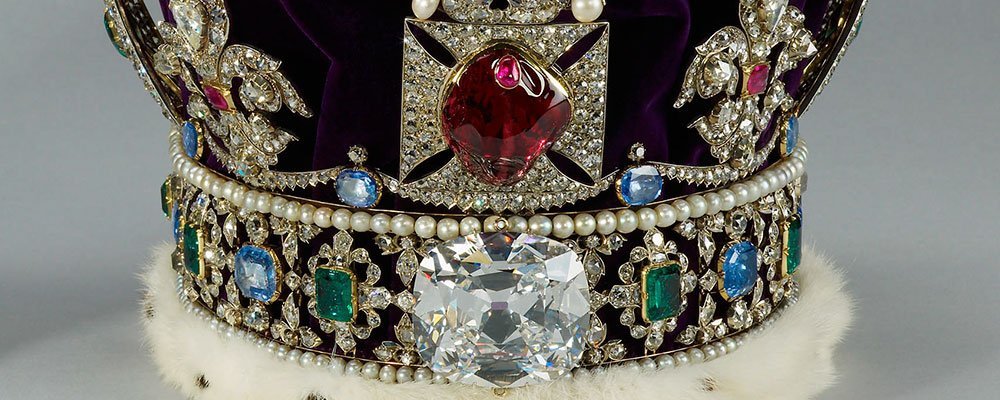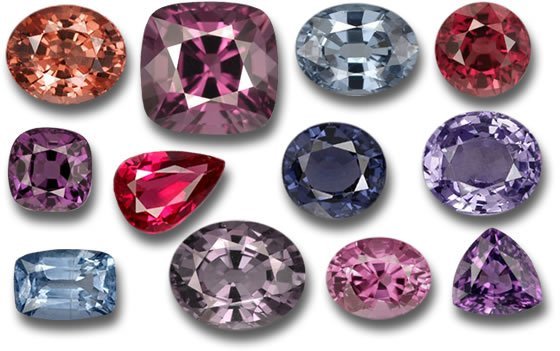AN INTRODUCTION TO SPINELS
When I visited Baselworld last month, one of the world’s premier jewellery events, I was surprised but pleased to see the large amount of top quality spinels available on offer to buyers. It is a very underrated stone which has never received the attention it deserves. An increased supply means that there is an increasing market for them and I suspect that it is going to go the way tourmalines did 15 years ago- suddenly people fell in love with the variety and depth of their colour and their popularity (and price) took off.
The rarest and most sought after colours are saturated reds and blues and because they occur in areas where the most highly prized rubies and sapphires are mined the gems were often confused. The most famous spinel in the world is a stone known as the Black Prince’s Ruby. It has a romantic history, having been brought back to England by the Black Prince, son of Edward III from his battles against the Moors in Spain during the 14th cenury. It was worn by Henry V at the Battle of Agincourt in 1415 and set in the Imperial State Crown in 1837, where it has remained ever since.
Spinels and sapphires and rubies are two distinct and separate mineral families with different mineral structures. The stratospheric rise in price of the latter has lead to an increased demand in red and blue spinels which can be offered as an attractive alternative (in some cases an improvement). Unlike many coloured stones on the market, spinels are rarely heat treated and this is seen as a huge bonus by serious gem collectors. Spinels also rank high on the Moh’s scale of hardness, coming in at about 7.5-8, which makes them durable. Blue and red aside, spinels range from the palest pinks and violets through to astonishing candy floss fuchsias, deep royal purples and silvery greys. Pastel tones should be relatively free of inclusions, but as the top colours are rarer, some inclusion is to be expected. It goes without saying that you should buy the best clarity you can afford. Cut is of paramount importance in this stone: when it is properly proportioned it has excellent brilliance and even the untrained eye can spot a dull stone. Do not be tempted: it is shoddy workmanship.
In terms of price, pastel tones are still relatively affordable and can be bought for £500-£1000/carat. Large, top quality red and blue stones are already rising in price and you can expect to pay several thousand pounds a carat. The big brands are still testing the waters with this gem, although Garrards have recently produced a line featuring fine red spinels and Cartier created a high jewellery necklace set with an important fuchsia pink stone from Tajikistan. JAR, of course, always decades ahead of the game, has been using them for years.
As has been mentioned before, the finest examples come from Sri Lanka and the Mogok mines in Burma. However, good deposits quality deposits are also being extracted from Vietnam, Tajikistan and various African mines- the stones emerging from Madagascar are particularly exceptional. I would rarely advise people to buy stones as investments, but if you are thinking of making an important purchase whose value you would like to see rise satisfactorily in the next 10 years, I would be happy to take a punt on the spinel.
The most famous spinel: the Black Prince's Ruby, set in the Imperial State Crown
The variety of spinel colours, from deep reds to silvery greys




